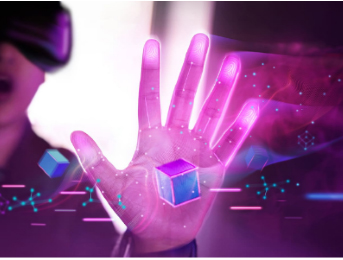
Most people are awaiting Virtual Reality; I’m awaiting virtuous reality.
ELI KHAMAROV
When we talk about Virtual Reality (VR), many of us think of science fiction films like ‘Ready Player one’ or ‘Gamer. However, the truth is that technology has become an integral part of our day-to-day activities where the technology completely blends in with our daily lives. Online games, medicine, education… Virtual Reality is here to stay. But do we all know what exactly it is?
The amalgamation of the word virtual reality has come from two words ‘virtual’ and ‘reality’. The meaning of ‘virtual’ is near and reality is what we experience as human beings. So the term ‘virtual reality’ fundamentally means ‘near-reality’. This could, of course, mean anything but it usually refers to a specific type of reality simulation.
The term virtual reality was coined in 1987 by Jaron Lanier, whose research and engineering contributed a number of products to the Virtual Reality industry.
So if we have to define it in technical terms virtual reality is a computer-generated environment that can be explored and interacted by a person. Here, the person becomes the integral part of this created virtual world, which can be manipulated in a series of actions.
In virtual reality, the use of computer modeling and simulation helps a person to interact with an artificial (3-Dimensional) visual or other sensory background. A computer-generated environment immerse through the use of interactive devices, where information is sent and received by the users using techy goggles, headsets, gloves, or bodysuits. In a typical VR format, the user has to wear a helmet with a stereoscopic screen that views animated images of a simulated environment.
Why have virtual reality?
In all the areas which have a greater impact on our day-to-day lives, Virtual reality can lead to new and exciting discoveries. Virtual reality is the answer to all the systems or work which is too dangerous, expensive, or impractical to do something in actuality.
That’s enough information to tell what is projecting us into the future. Let’s find the sectors where Virtual Reality is actually being used today? To name a few Medicines and Medical & Healthcare Applications, High-grade kitchens, Retail sectors, Education and training, construction, engineering and manufacturing Industries, Tourism and hospitality, design and architecture are some of the areas where this technology has taken an upper hand. From the guided museums, School visits to the dissection of a muscle, VR allows us to cross boundaries that would otherwise be unimaginable.
The given below image shows a wide variety of applications for virtual reality which includes:

Image Source: IBERDROLA
VR is quickly expanding in popularity amongst marketers. It’s a brilliant way for brands to create a digitally-focused, immersive experience that promotes consumer engagement. There are multiple brands that are using VR in their strategies.
- Retail: Tom’s shoes
- Beverages: Patrón Spirits
- Event planning: Marriott International
- Automotive: Vroom
- Restaurant: McDonald’s
From dynamic sales to increasing brand engagement efforts, VR is an excellent tool for engaging consumers in your brand. Inclusively this means that Virtual Reality is no longer science fiction. It is assimilated into our current and, in the coming years, it will lead to advances that will shape the future. It uses a host of technologies to achieve this goal and is a technically complex feat that has to account for our perception and cognition. It has both entertainment and thoughtful uses. this technology is becoming more economical and more prevalent and common. We can expect to see many more unfold innovative uses for the technology in the near future and possibly this would become a fundamental way in which we communicate and work, thanks to the possibilities of virtual reality.
Dr. Supriya Bhagat
Assistant Professor, AISSMS IOM